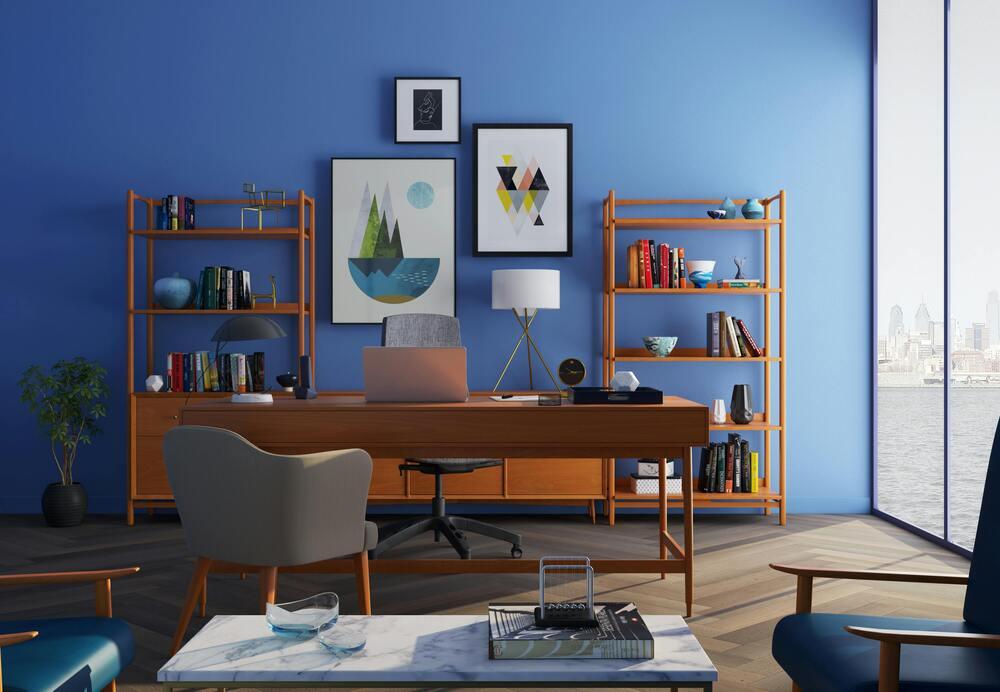In today's fast-paced world, the home office has become a vital space for many professionals. Whether you're a freelancer, a remote worker, or a student, creating a productive environment is essential for success. But what if you’re working with limited space? Fear not! With the right strategies, you can transform even the tiniest corner of your home into a highly efficient workspace. Let’s dive into some effective tips and tricks to design a productive home office that maximizes your space and boosts your productivity! ?

Understanding the Importance of a Home Office
A well-designed home office can significantly impact your productivity. According to a study by the International Workplace Group, 85% of employees feel more productive when they have a dedicated workspace. Additionally, 70% of remote workers report that having a designated area for work helps them maintain a better work-life balance. With these statistics in mind, it’s clear that investing time and effort into your home office design is worthwhile.
Key Elements of a Productive Home Office
When designing your home office, consider the following key elements:
-
Ergonomics: Your comfort is paramount. Invest in a good chair and desk that promote good posture. A study by the Occupational Safety and Health Administration (OSHA) found that ergonomic workspaces can reduce discomfort and increase productivity by up to 25%.
-
Lighting: Natural light is a game-changer. A survey by the American Society of Interior Designers found that 68% of people feel more productive in well-lit spaces. If natural light is limited, consider using full-spectrum bulbs to mimic daylight.
-
Organization: Clutter can be a significant distraction. A clean and organized workspace can enhance focus. According to a study by the Princeton University Neuroscience Institute, clutter can actually impede your ability to focus and process information.
-
Personalization: Adding personal touches can make your workspace feel more inviting. Whether it’s artwork, plants, or motivational quotes, these elements can inspire creativity and positivity.
Space-Saving Solutions
In a tiny space, every inch counts! Here are some space-saving solutions to consider:
Multi-Functional Furniture
Invest in furniture that serves multiple purposes. For example, a desk with built-in storage or a foldable table can save space while providing functionality.
Vertical Storage
Utilize wall space for storage. Shelves, pegboards, and wall-mounted organizers can help keep your workspace tidy without taking up valuable floor space.
Compact Desks
Consider a compact desk that fits your needs without overwhelming your space. There are many stylish options available that can blend seamlessly into your home decor.
Here’s a table summarizing some effective space-saving furniture options:
| Furniture Type | Description | Emoji |
|---|---|---|
| Foldable Desk | Easily collapsible for storage | ? |
| Wall Shelves | Keeps items off the floor and organized | ? |
| Storage Ottomans | Provides seating and hidden storage | ?️ |
| Corner Desks | Utilizes corner space efficiently | ? |
Creating a Productive Atmosphere
The atmosphere of your home office can greatly influence your productivity. Here are some tips to enhance your workspace environment:
Color Psychology
Colors can affect mood and productivity. For instance, blue is known to promote calmness and focus, while yellow can inspire creativity. Consider painting your office in colors that resonate with your work style.
Noise Control
If you’re in a noisy environment, consider soundproofing your space or using noise-canceling headphones. A study by the Journal of Environmental Psychology found that background noise can hinder concentration, so creating a quiet environment is crucial.
Technology Setup
Ensure your technology is up to date. Slow computers and poor internet connections can be frustrating and hinder productivity. According to a report by the McKinsey Global Institute, improving digital tools can increase productivity by 20-25%.
Here’s a table showcasing some essential tech tools for a productive home office:
| Tech Tool | Purpose | Emoji |
|---|---|---|
| High-Speed Internet | Ensures smooth online work | ? |
| Noise-Canceling Headphones | Reduces distractions | ? |
| Ergonomic Keyboard | Promotes comfort during typing | ⌨️ |
| Task Management Apps | Helps organize tasks and deadlines | ? |
Final Touches
Once you’ve set up your home office, don’t forget to add some final touches. Consider incorporating plants, which can improve air quality and boost your mood. A study by the University of Exeter found that having plants in the workplace can increase productivity by 15%.
Additionally, keep your workspace clean and clutter-free. Regularly decluttering can help maintain focus and efficiency.
For more tips on creating a productive workspace, check out resources like The Spruce or Forbes.
Conclusion
Designing a productive home office in a tiny space is entirely achievable with the right strategies. By focusing on ergonomics, lighting, organization, and personalization, you can create an environment that fosters productivity and creativity. Remember, every small change can lead to significant improvements in your work life. So, roll up your sleeves and start transforming your workspace today! ?



